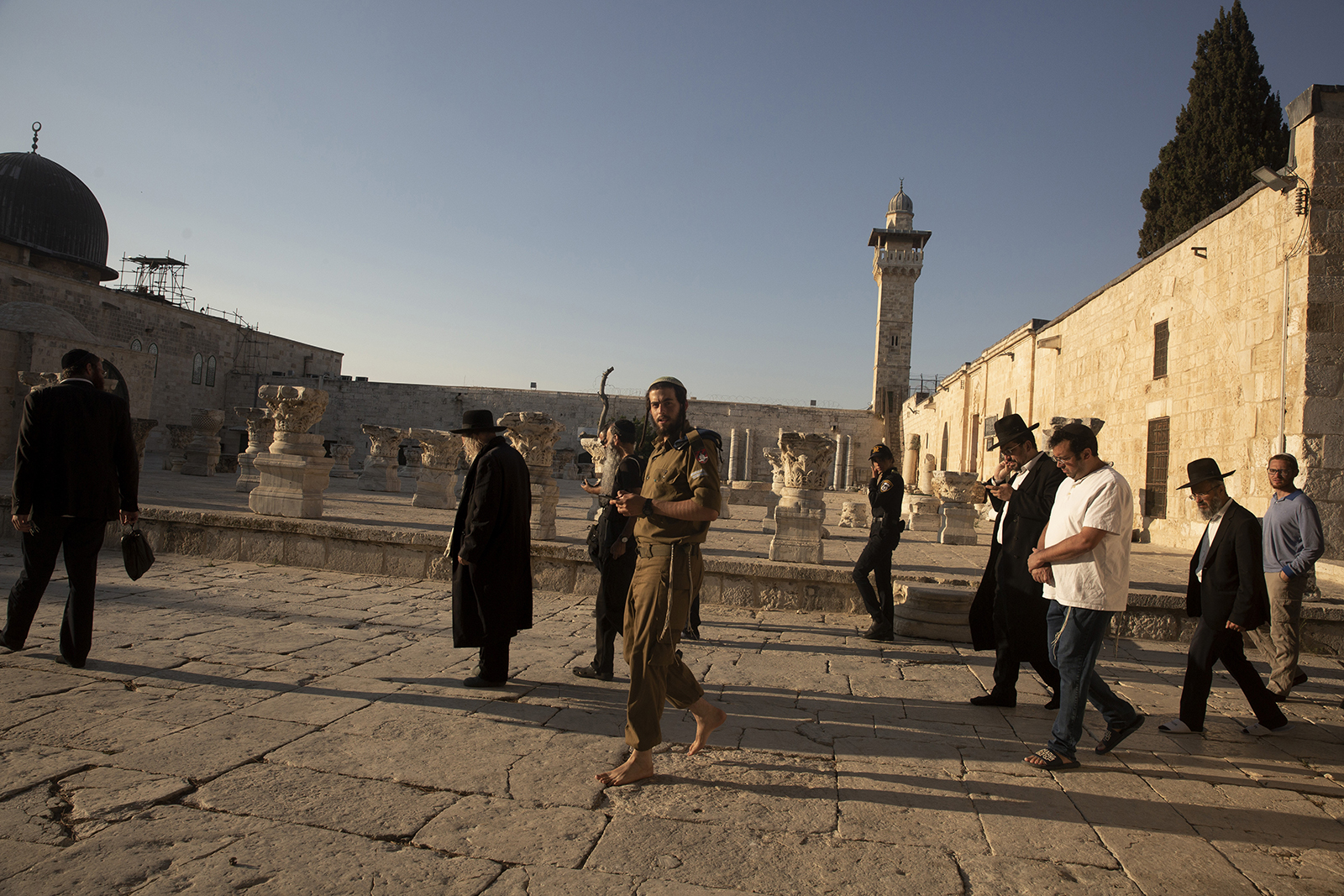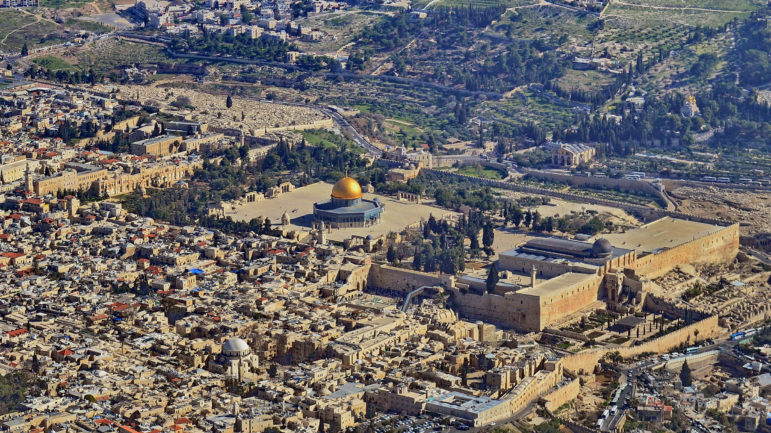(RNS) — After Israel captured Jerusalem in the 1967 Six-Day War, the Israeli Chief Rabbinate ordered that a sign be posted at the Mughrabi Gate, the entrance to the sacred Temple Mount for non-Muslims, warning that “According to Torah Law, entering the Temple Mount area is strictly forbidden due to the holiness of the site.”
The Mount — Judaism’s most sacred site, and toward which Jews the world over face when they pray — was where the two ancient Jewish temples, the centers of the faith and Jewish life, originally stood. It is also believed by Muslims to be the place where the Prophet Muhammad ascended to heaven, and it is dominated today by the Dome of the Rock shrine and the Al-Aqsa Mosque complex. It is administered by the Waqf, a Muslim endowment run by Jordan.
The signs posted in 1967 remained there for decades, until this past August, when unknown activists replaced it with one asserting, in opposition to the rabbinate’s position and rulings by the most revered haredi (or “ultra-Orthodox”) authorities, that ascending the Mount is permitted after immersion in a ritual bath.
In 1967, Israel made the choice to not disrupt the Waqf’s oversight. Israeli government and Muslim religious authorities agreed that Jews would be permitted to pray at the Western Wall, part of the retaining wall surrounding the Mount, dating back to the days of King Herod. Muslims would continue to have effective control of the Islamic edifices atop the Mount. The compound would be open for visits by non-Muslims, but not for prayer.
RELATED: Israel’s Haredi parties support Netanyahu again, but their politics aren’t what you think
Aside from Jewish religious objection to Jews entering the complex, there is a secular, political curb in place as well. By Israeli law, non-Muslims may go up to the Temple Mount to visit, but not to pray or conduct rites.
From a purely reasonable perspective, a prohibition against praying at a religious site — not to mention Jews praying at their faith’s holiest one — might seem puzzling. Indeed, there were some voices in 1967 demanding that Israel not only occupy the site but raze its mosques and build a third Jewish temple to replace the second one, razed by Rome in 70 C.E.

Religious Jews arrive to pray at the Temple Mount, known to Muslims as the Noble Sanctuary, in the Old City of Jerusalem, Aug. 2, 2021. Jewish prayers at Jerusalem’s most sensitive holy site were once unthinkable. But they have quietly become the norm in recent years, defying long-standing convention, straining a delicate status quo and raising fears that they could trigger a new wave of violence in the Middle East. (AP Photo/Maya Alleruzzo)
The religious reasons for the prohibition are complex. To enter such a holy place, Jewish law requires any Jewish man or woman who has had contact with or been under the same roof as a deceased person to undergo a purification ritual that involves, among other things, a perfectly red heifer that has never been worked in any way — in other words, something exceedingly rare. In Jewish thought, the “red heifer” ritual is considered the ultimate example of an imponderable law but is binding all the same.
But Israel’s political leaders also felt that, to maintain the peace and demonstrate goodwill toward Muslims, Islamic worship on the Mount should not be disturbed. And so the deal with the Waqf was struck and has been honored over the years. The only times Israeli police have entered the compound were when clear dangers were posed, as when rocks and debris were thrown down at Jewish worshippers at the Western Wall.
Lately, Jewish nationalists bent on affirming the Jewish connection to the Mount have increasingly visited the site, some trying to skirt the prohibition on non-Muslim prayer. In 2021, visits to the site by Jews, including Knesset members, exceeded 30,000.
Some of the visitors may have been motivated entirely by religious feelings, their souls pining to stand where their ancestors prayed thousands of years ago. Others seem motivated more by nationalistic feelings than religious ones, by a desire to demonstrate Israel’s ultimate jurisdiction over the Temple Mount, even if they must be accompanied by Israeli police to ensure that they do not violate the “no praying” rule.
The latter is a provocation without a justification. It is also a gift to Muslim extremists the world over who loathe Israel and search for anything they can portray as insulting.
The replacement of the rabbinate’s warning that Jews should refrain from ascending the Mount with a sign permitting it was yet another provocation.
RELATED: As Jews pray on Temple Mount, status quo in Jerusalem’s holiest site begins to shift
Thankfully, according to the Israeli newspaper Haaretz, Chief Rabbi Yitzhak Yosef approached the official rabbi of the Western Wall, Rabbi Shmuel Rabinovitch, requesting the removal of the new sign and the return of the original one forbidding Jews to ascend the Mount.
Some nationalist Israelis might be bristling at the old sign’s return. But Jews whose religious convictions are not entangled with nationalistic sentiments believe it not only wrong as an issue of Torah law to ascend the Mount, but wrong as well to goad or incite other peoples or religions. They — we — continue to pray, at the Western Wall and in synagogues and homes across the planet, that God himself will usher in the era when, in the metaphorical words of Isaiah, “a wolf and a lamb shall graze together,” when global peace and unity of purpose among all people will reign.
(Rabbi Avi Shafran is a columnist for Ami Magazine and serves as director of public affairs for Agudath Israel of America. The views expressed in this commentary do not necessarily reflect those of Religion News Service.)





